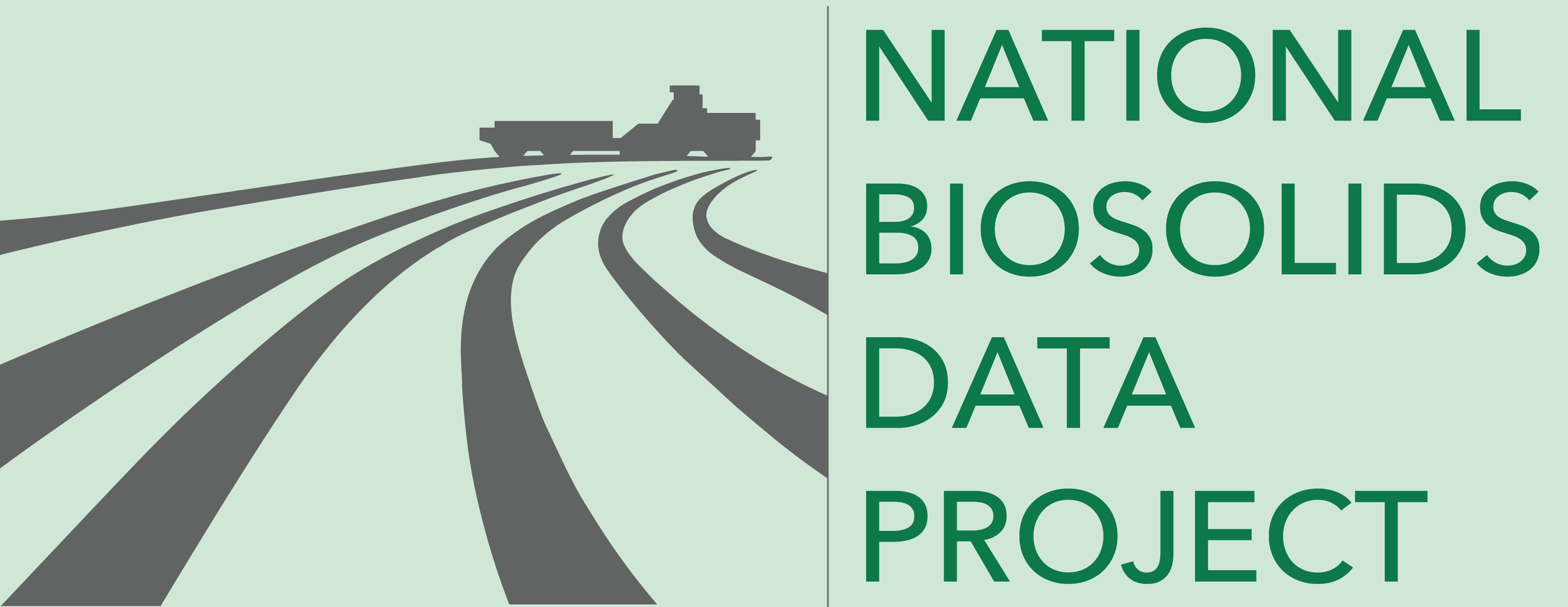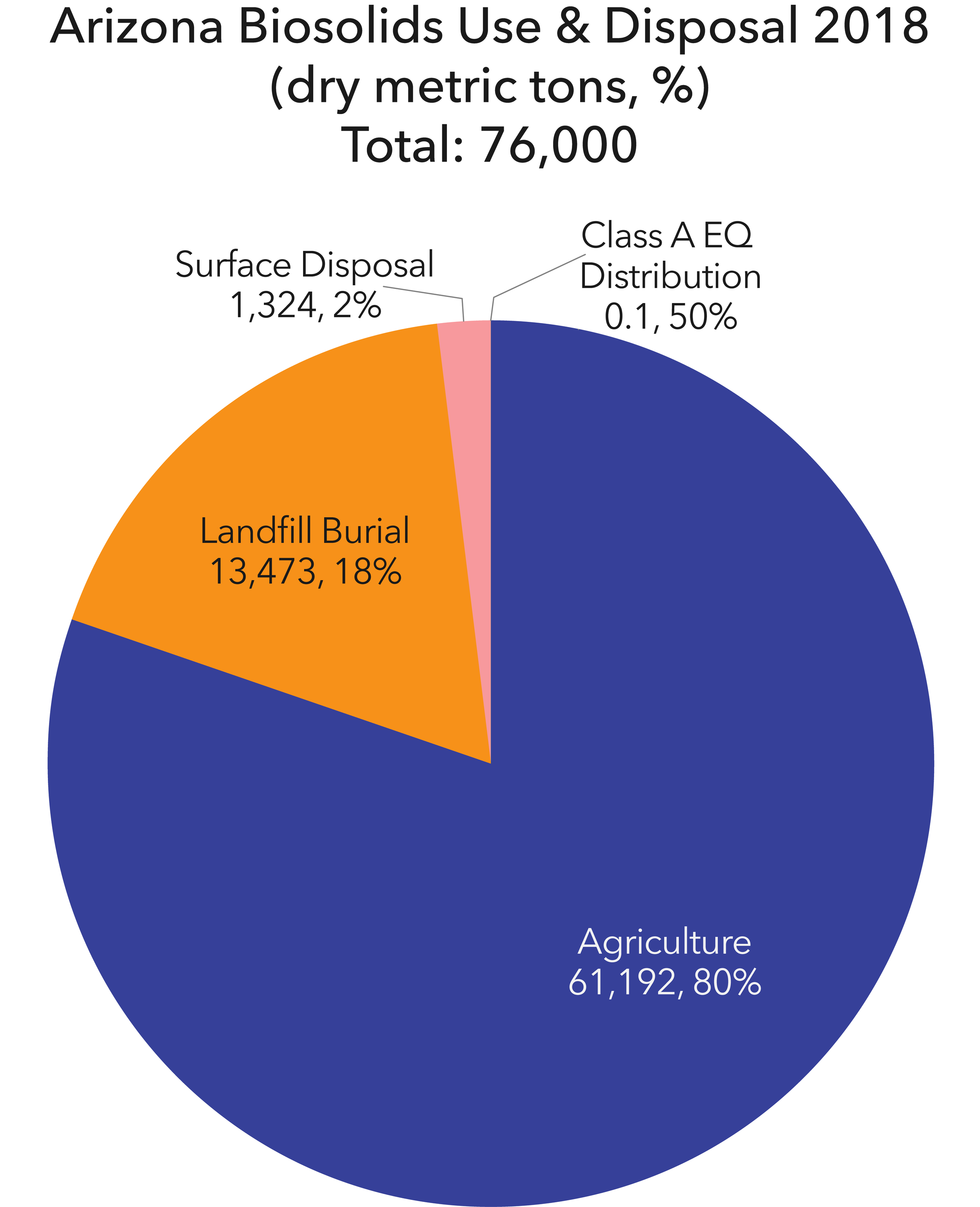State Data
Confidence in data for this state:
LOW
2018 data unless noted.
Definitions
Terms used on this website and in data sets are defined & discussed here.
Biosolids composting in Arizona. Photo courtesy of Synagro.
State Statistics Dashboard
State Summary
● Arizona (AZ) is an arid state, and both wastewater effluent and biosolids are widely utilized for moisture and soil amendments on farms and in horticulture and landscaping. Almost all AZ wastewater solids were recycled to soils in 2018, as has been the case and is the case for many years. Typically, ~90% of AZ wastewater solids goes to Class B land application.
● AZ DEQ is delegated by U.S. EPA for the federal 40 CFR Part 503 biosolids program, which means AZ DEQ has full responsibility, including record-keeping. AZ WRRFs are not required to submit annual reports for the U.S. EPA ECHO database. For details on the AZ DEQ biosolids regulatory program, see: https://azdeq.gov/why-do-i-need-biosolids-land-application-registration.
● Several private biosolids management companies contract with WRRFs to transport and land apply biosolids: Synagro land applies biosolids from Phoenix and surrounding communities; Avra-Gro applies biosolids from the Tucson area to sites in Pima and Pinal Counties; and Denali Water Solutions applies Mesa biosolids to sites in Pinal County. AZ is a destination for about 15% of California’s biosolids, typically close to 100,000 dmt per year, most of it applied directly to AZ agricultural land as Class B biosolids, managed by Ag-Tech and Denali. The one large composting operation in AZ is used exclusively for California solids: Synagro’s Arizona Soils Composting Facility in Vicksburg, which processes about 2% of CA solids (~13,000 dmt/year). (For this national data project, CA solids managed in AZ are not included in AZ data; they are counted in CA data.)
● No wastewater solids are incinerated in Arizona; it is not allowed. Almost all of the state’s solids not land applied are disposed of in landfills, which have abundant capacity. The City of Flagstaff operates a surface disposal site, disposing of ~1,000 dmt per year. For smaller WRRFs with smaller staff, landfill disposal is simpler than land application and the treatment, testing, permitting, and reporting land application requires.
● Phoenix, the capitol and largest city in AZ, hosts the state’s largest water resource recovery facility (WRRF) – the 91st Avenue Wastewater Treatment Plant, which treats 145 MGD on average. According to TPO, for many years, 100% of its effluent and biosolids have been beneficially used, the effluent “for irrigation, supplying the Tres Rios Wetland, and for cooling the nuclear reactors at the Palo Verde Generating Station,” the largest nuclear power facility in the U.S. Phoenix also manages the solids from some nearby communities. In 2018, resource recovery was increasing with the addition of improved biogas utilization – a “renewable natural gas plant” owned and operated by Ameresco, producing renewable natural gas that is sold into the local natural gas pipeline, with use as vehicle fuel providing credits under the U.S. EPA Renewable Fuel Standards.
● Pima County, which includes Tucson, treats ~62 MGD of wastewater at two major Tucson WRRFs and five smaller facilities in other parts of the County. All of the solids from all of the County WRRFs are anaerobically digested at the Tres Rios WRRF. All the resulting Class B biosolids are land applied, some in thickened form injected into farm soils, and some dewatered and land applied as semi-solid “cake.”


